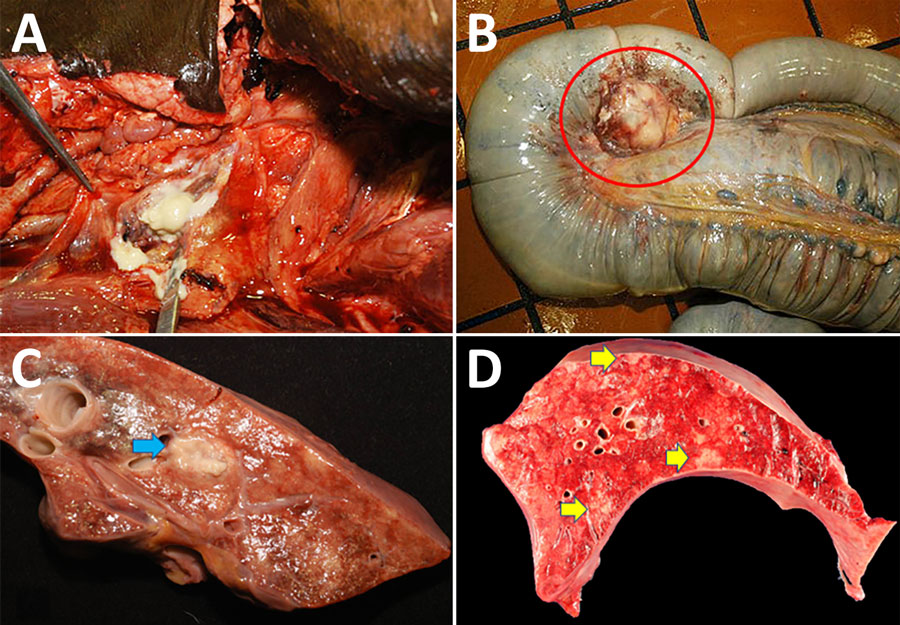Volume 31, Number 7—July 2025
Dispatch
Multisystemic Disease and Septicemia Caused by Presumptive Burkholderia pseudomallei in American Quarter Horse, Florida, USA
Figure 1

Figure 1. Postmortem photographs of an American quarter horse in study of multisystemic disease and septicemia caused by presumptive Burkholderia pseudomallei, Florida, USA. A) The submandibular lymph node was enlarged up to 20 cm in diameter and almost completely effaced by purulent material that extended into the retropharyngeal space and drains near the mandibular ramus. B) Cecal lymph nodes were diffusely enlarged up to 6 cm in diameter and filled with purulent material (red circle). C) The lung was diffusely firm with rib impressions and multifocal 5 × 5-mm to 1 × 2-cm abscesses (blue arrow). D) The liver contained multifocal random 1 × 1-cm pale tan foci scattered throughout the hepatic parenchyma (yellow arrows).
Page created: May 01, 2025
Page updated: June 25, 2025
Page reviewed: June 25, 2025
The conclusions, findings, and opinions expressed by authors contributing to this journal do not necessarily reflect the official position of the U.S. Department of Health and Human Services, the Public Health Service, the Centers for Disease Control and Prevention, or the authors' affiliated institutions. Use of trade names is for identification only and does not imply endorsement by any of the groups named above.